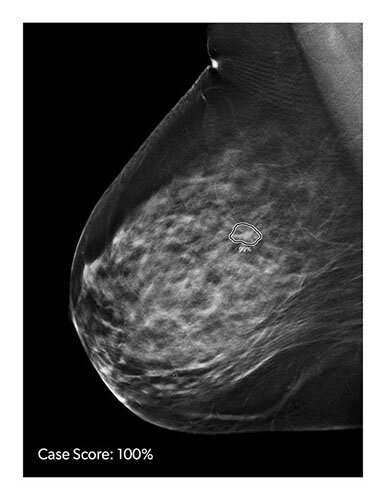Breakthrough in Nanosized Contrast Agents to Enhance Magnetic Resonance Imaging
|
By MedImaging International staff writers Posted on 06 Dec 2023 |

Magnetic resonance imaging (MRI) plays a vital role in cancer diagnosis by capturing detailed images of soft tissues. For enhanced tumor visibility in MRI scans, doctors often administer contrast agents to patients. These agents impact the response of surrounding hydrogen ions to MRI's radiofrequency pulses. The aim of using contrast agents is to have them specifically accumulate in tumors, thereby heightening their visibility in the scans. However, traditional gadolinium (Gd)-chelate contrast agents have nearly reached their performance peak. One of the main challenges is achieving an optimal dose in the distribution of Gd-chelate in tumors, healthy tissue, and blood without excessive Gd doses.
In response, a collaborative study by a research team that included scientists from Tokyo Institute of Technology (Tokyo, Japan) has led to the development of a groundbreaking nano-contrast agent (NCA) using an innovative molecular design. This NCA utilizes Gd as the contrast agent within a "self-folding macromolecular drug carrier (SMDC)." The team integrated clinically approved Gd-containing chelates into a polymer chain comprising poly(ethylene glycol) methyl ether acrylate (PEGA) and benzyl acrylate (BZA). This polymer, featuring both hydrophilic and hydrophobic sections, spontaneously forms a small, capsule-like structure in water, positioning the hydrophobic segments internally and the hydrophilic ones externally.
This methodology allowed for the production of SMDC-Gds molecules under 10 nanometers in size. Experiments on mice with colon cancer demonstrated that these NCAs accumulated more effectively in tumors and were rapidly cleared from the bloodstream, thus enhancing MRI capabilities without toxic side effects. Furthermore, the team uncovered an additional benefit of SMDC-Gds over existing Gd-chelates. The optimal performance of Gd ions is achieved when their movement is restricted, ensuring a consistent and prolonged impact on neighboring hydrogen ions. The SMDC's core/shell structure creates a densely packed molecular environment that limits the rotation and internal motions of Gd ions, thereby resulting in a stronger contrast in MRI images. This will enable the use of alternative elements with safer profiles in patients as well as the environment in the future.
Beyond MRI applications, SMDC-Gds show promise in neutron capture therapy (NCT), an emerging targeted radiotherapy method. In NCT, Gds capture neutrons and emit high-energy radiation, destroying cancer cells in proximity. Experiments showed that NCT with repeated SMDC-Gd injections significantly reduced tumor growth, which can be attributed to the selective accumulation and deep penetration of SMDC-Gds in tumor tissues. The research highlights the potential of SMDCs not just for improved MRI diagnostics, but also as effective cancer treatment modalities and other medical applications.
"This study presents further possibilities for exploiting drug delivery using various therapeutic cargos, and we are currently investigating the development of such SMDC systems," said Associate Professor Yutaka Miura of Tokyo Tech who led the research team.
Related Links:
Tokyo Institute of Technology
Latest MRI News
- PET/MRI Improves Diagnostic Accuracy for Prostate Cancer Patients
- Next Generation MR-Guided Focused Ultrasound Ushers In Future of Incisionless Neurosurgery
- Two-Part MRI Scan Detects Prostate Cancer More Quickly without Compromising Diagnostic Quality
- World’s Most Powerful MRI Machine Images Living Brain with Unrivaled Clarity
- New Whole-Body Imaging Technology Makes It Possible to View Inflammation on MRI Scan
- Combining Prostate MRI with Blood Test Can Avoid Unnecessary Prostate Biopsies
- New Treatment Combines MRI and Ultrasound to Control Prostate Cancer without Serious Side Effects
- MRI Improves Diagnosis and Treatment of Prostate Cancer
- Combined PET-MRI Scan Improves Treatment for Early Breast Cancer Patients
- 4D MRI Could Improve Clinical Assessment of Heart Blood Flow Abnormalities
- MRI-Guided Focused Ultrasound Therapy Shows Promise in Treating Prostate Cancer
- AI-Based MRI Tool Outperforms Current Brain Tumor Diagnosis Methods
- DW-MRI Lights up Small Ovarian Lesions like Light Bulbs
- Abbreviated Breast MRI Effective for High-Risk Screening without Compromising Diagnostic Accuracy
- New MRI Method Detects Alzheimer’s Earlier in People without Clinical Signs
- MRI Monitoring Reduces Mortality in Women at High Risk of BRCA1 Breast Cancer
Channels
Radiography
view channel
Novel Breast Imaging System Proves As Effective As Mammography
Breast cancer remains the most frequently diagnosed cancer among women. It is projected that one in eight women will be diagnosed with breast cancer during her lifetime, and one in 42 women who turn 50... Read more
AI Assistance Improves Breast-Cancer Screening by Reducing False Positives
Radiologists typically detect one case of cancer for every 200 mammograms reviewed. However, these evaluations often result in false positives, leading to unnecessary patient recalls for additional testing,... Read moreUltrasound
view channel
Deep Learning Advances Super-Resolution Ultrasound Imaging
Ultrasound localization microscopy (ULM) is an advanced imaging technique that offers high-resolution visualization of microvascular structures. It employs microbubbles, FDA-approved contrast agents, injected... Read more
Novel Ultrasound-Launched Targeted Nanoparticle Eliminates Biofilm and Bacterial Infection
Biofilms, formed by bacteria aggregating into dense communities for protection against harsh environmental conditions, are a significant contributor to various infectious diseases. Biofilms frequently... Read moreNuclear Medicine
view channel
New SPECT/CT Technique Could Change Imaging Practices and Increase Patient Access
The development of lead-212 (212Pb)-PSMA–based targeted alpha therapy (TAT) is garnering significant interest in treating patients with metastatic castration-resistant prostate cancer. The imaging of 212Pb,... Read moreNew Radiotheranostic System Detects and Treats Ovarian Cancer Noninvasively
Ovarian cancer is the most lethal gynecological cancer, with less than a 30% five-year survival rate for those diagnosed in late stages. Despite surgery and platinum-based chemotherapy being the standard... Read more
AI System Automatically and Reliably Detects Cardiac Amyloidosis Using Scintigraphy Imaging
Cardiac amyloidosis, a condition characterized by the buildup of abnormal protein deposits (amyloids) in the heart muscle, severely affects heart function and can lead to heart failure or death without... Read moreGeneral/Advanced Imaging
view channel
New AI Method Captures Uncertainty in Medical Images
In the field of biomedicine, segmentation is the process of annotating pixels from an important structure in medical images, such as organs or cells. Artificial Intelligence (AI) models are utilized to... Read more.jpg)
CT Coronary Angiography Reduces Need for Invasive Tests to Diagnose Coronary Artery Disease
Coronary artery disease (CAD), one of the leading causes of death worldwide, involves the narrowing of coronary arteries due to atherosclerosis, resulting in insufficient blood flow to the heart muscle.... Read more
Novel Blood Test Could Reduce Need for PET Imaging of Patients with Alzheimer’s
Alzheimer's disease (AD), a condition marked by cognitive decline and the presence of beta-amyloid (Aβ) plaques and neurofibrillary tangles in the brain, poses diagnostic challenges. Amyloid positron emission... Read more.jpg)
CT-Based Deep Learning Algorithm Accurately Differentiates Benign From Malignant Vertebral Fractures
The rise in the aging population is expected to result in a corresponding increase in the prevalence of vertebral fractures which can cause back pain or neurologic compromise, leading to impaired function... Read moreImaging IT
view channel
New Google Cloud Medical Imaging Suite Makes Imaging Healthcare Data More Accessible
Medical imaging is a critical tool used to diagnose patients, and there are billions of medical images scanned globally each year. Imaging data accounts for about 90% of all healthcare data1 and, until... Read more
Global AI in Medical Diagnostics Market to Be Driven by Demand for Image Recognition in Radiology
The global artificial intelligence (AI) in medical diagnostics market is expanding with early disease detection being one of its key applications and image recognition becoming a compelling consumer proposition... Read moreIndustry News
view channel
Bayer and Google Partner on New AI Product for Radiologists
Medical imaging data comprises around 90% of all healthcare data, and it is a highly complex and rich clinical data modality and serves as a vital tool for diagnosing patients. Each year, billions of medical... Read more



















